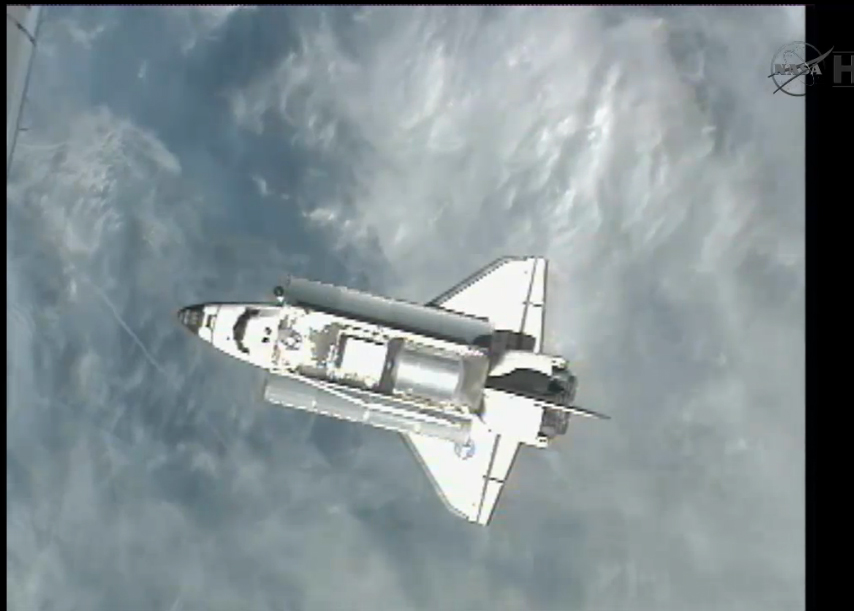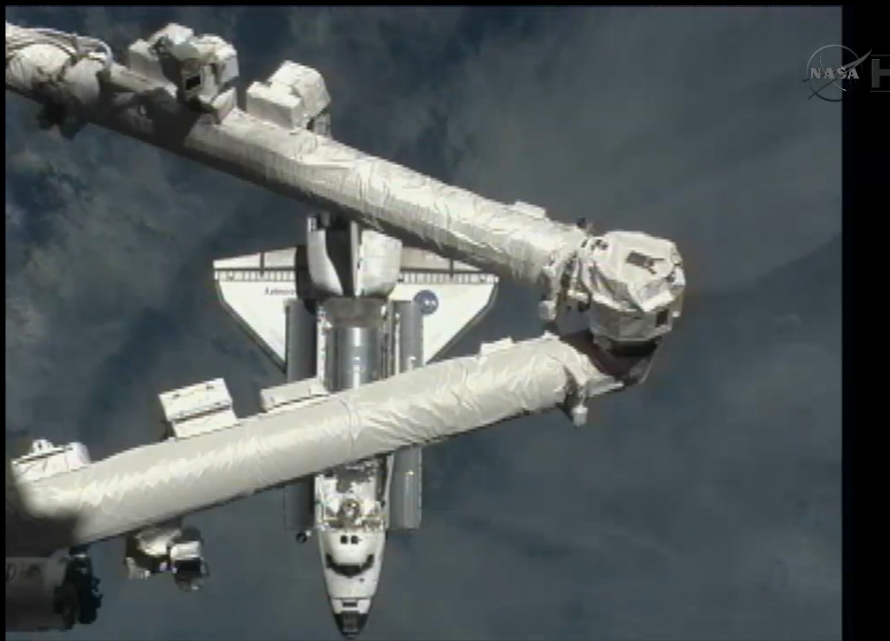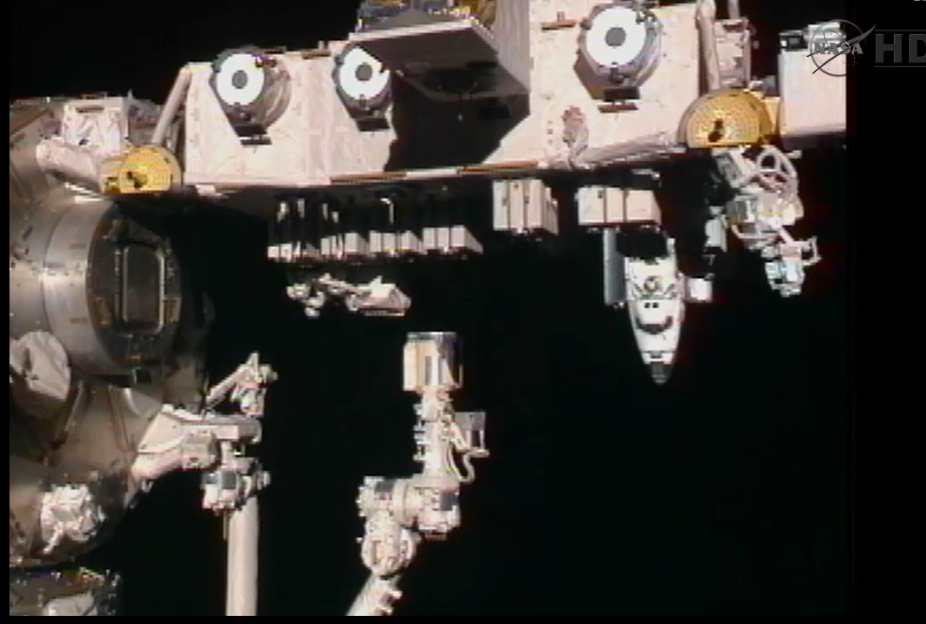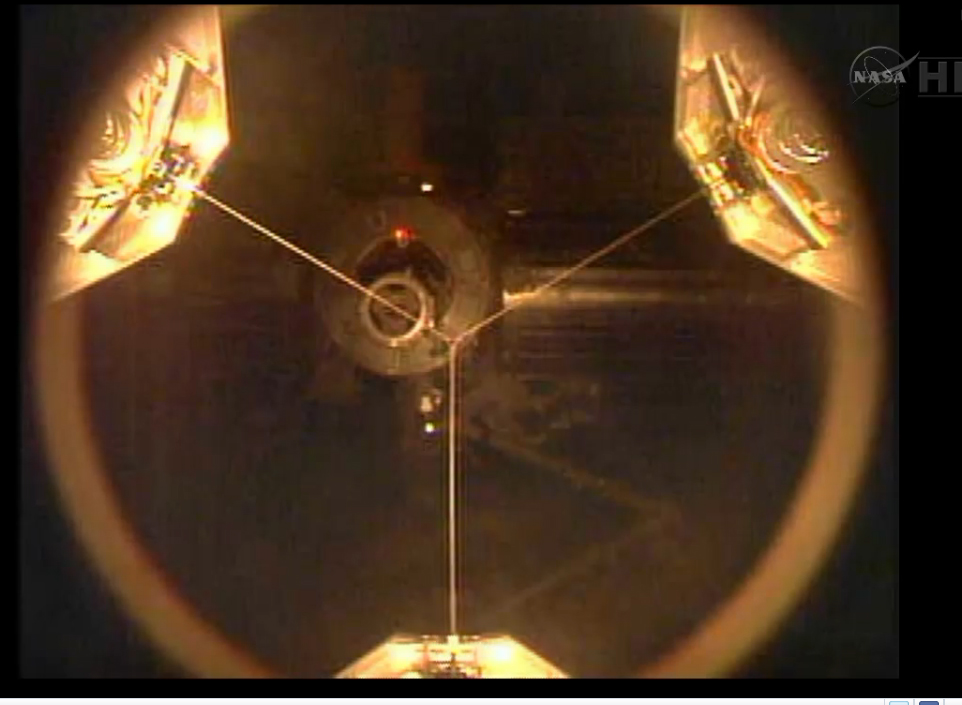But We’re Saying GoodBye to a Once-Active Part of It Today
Today is a bittersweet day for space buffs. The space shuttle Discovery left the Kennedy Space Center for the last time this morning and a few hours later made its victory lap over Washington, D.C. before settling down on the runway at Dulles Airport. It now begins its retirement at the Smithsonian’s Udvar-Hazy complex near the airport, as an exhibit. It was a thrill to see the shuttle (mated to its carrier 747) swoop over the D.C. area in a graceful display of our hopes and dreams in space. Look at the pictures below, and you’ll see not just Discovery, but the people who came out to watch her final descent. People who wanted to see something special, people who realized this was the passing of something special. It meant something to them.
Those hopes and dreams are going in a different direction these days. Ever since President Bush announced in 2004 that it would bring the program to a close and signed directives to that effect, we’ve known this day was coming. Still, it’s sad to know that the shuttle program is really coming to an end. Yet, it didn’t have to be this way. In the years since then, NASA should have had the funding and support to come up with a new means of getting to space that improved on the shuttle program.
Instead, we have begun work on what looks like an Apollo-style program that is withering on the vine, being jerked around by political considerations. The companies working on it are doing the best they can, and I wish them the best. But they have a rough row to hoe, reinventing wheels that NASA people were raised to perfect long ago.
NASA’s other missions of planetary exploration, education, and research are also suffering, getting just enough money to keep stayin’ alive, but not exactly thriving. Tax cuts or not, NASA programs create JOBS and pride; two things that Wall Street lobbyists, Teabaggers, wingnut politicians, anti-science bigots, and many others either just don’t get or just don’t really care about.
But, many, many people of our country DO care. The space program is part of our national psyche, something we’ve always been proud of. Just look at the faces of the people who lined D.C.’s roads today, flocked to viewing sites, and took millions of images and videos to post on the Web and Facebook and Flickr and other sites, and tell ME they don’t care. It excites them.
The political hacks who are helping to “ungrow” our space program one program at a time are mocking that excitement; worse, they’re mocking a thing that makes many Americans feel good about what we can accomplish if we set our minds to it. They’re mocking fellow Americans, and that seems almost traitorous.
Don’t get me wrong. I know that we had an aging shuttle fleet and that it would have needed to be retired sooner or later. That’s the nature of technological change. And, for the record, I doubt there’s very much the current administration could have done to resurrect the shuttle program. By the time President Obama took office, the shuttle program was too far gone to bring back. The relevant work needed to be done well before Bush left office. A new program that built on the success of the shuttle, rather than going back to “spam in a can” designs should have started up as soon as Bush signed the warrant killing the old one. But, that didn’t happen, and so today, we have our last shuttles becoming museum pieces. And, not to put too fine a point on it, but Congress (more so than the President) bears a HUGE responsibility for funding for NASA. Congress has not met that responsibility; indeed, rather than admit that, some members prefer to finger-point away from themselves, blaming the President or anybody else even as they gut the NASA budget. Hypocritical much?
The good news? We still have a space program, but one that is being gutted by science-intolerant hacks intent on wrecking government in order to save it. Our space program, which costs YOU and ME (if you’re a U.S. citizen) LESS than half a cent apiece, is a job creator. It’s a technology incubator. It educates. It inspires. It returns MORE to our economy than it takes in. It feeds the future, which is something we need. It shouldn’t be ripped to shreds by politicians in Congress who waste their taxpayer-paid salaries and gold standard benefits (that WE pay for) creating and wallowing in ugly political pigsties in order to get elected (or re-elected). Perhaps if we didn’t vote for people whose only intent is to destroy jobs and technological innovation in their efforts to pander, things would change. But, that’s a rant for a different day.

Today, let’s focus on the beauty of what our space program does provide: some of the most gorgeous insights into our cosmos that anyone on Earth has ever been given. That’s priceless. You can’t put a value on it, or what it does for the human spirit. Or what it pays forward in terms of knowledge and advancement in fields as diverse as biology and medicine and chemistry and physics, astronomy, and technology.
Yes, we can acknowledge the graceful beauty of the shuttles, the sadness of their passing, as is entirely right and proper. It is the end of an era and all such ends should give us pause to reflect on what we have accomplished and what remains to be done.
But, let’s also look at what our space program still offers us. For example, this gorgeous view of star formation in a nearby galaxy, released to celebrate Hubble’s 22nd anniversary of its launch to Earth orbit.
This is what investment in scientific knowledge gets you on the front end — the technological savvy to take pretty pictures AND explain them and relate them to our lives here on Earth. That kind of research IS an investment, and it pays off HUGE dividends on down the line. We just have to focus the attention of our leaders, to help them see their way clear to reupping and maintaining that investment.




